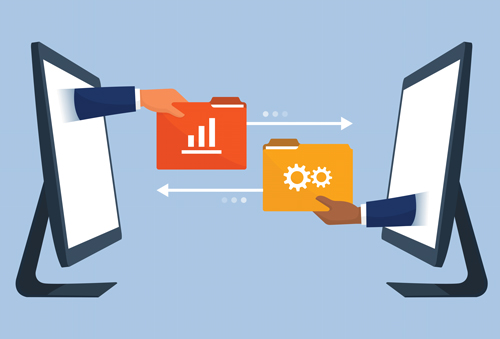Essential Steps for a Thorough Cyber Security Audit: Your Protective Shield Against Digital Threats
Understanding and executing a cyber security audit is vital in the current digital landscape. This article will guide you through the necessary steps to conduct an audit, identify vulnerabilities, and reinforce your systems against cyber threats. It offers actionable insight into the different types of audits, their importance, and how they can be leveraged to improve your organization’s security posture.
Key Takeaways
- Cybersecurity audits are crucial for identifying vulnerabilities and ensuring compliance, with diverse types such as compliance, penetration, and risk assessment audits to accommodate different organizational needs.
- A robust cybersecurity strategy involves regular assessments of key assets, refining security policies and procedures, and prioritizing protection based on the value and sensitivity of data, especially with third-party vendor risks.
- Conducting a comprehensive audit includes evaluating an organization’s security posture, implementing and continually updating action plans, and utilizing third-party services to ensure unbiased assessments and adherence to evolving data privacy laws.
- Let Beyond Technology help with your annual Cyber Security Health Check - here
Understanding Cyber Security Audits

A cybersecurity audit is akin to a health check for an organization’s IT infrastructure. It aims to detect vulnerabilities and threats, ensuring compliance with security policies and regulations to improve the overall security posture. Given the growing threat of cyber attacks, organizations irrespective of size are now prioritizing cybersecurity audits to maintain up-to-date and effective security measures.
Regular cybersecurity audits, recommended at least once a year or after significant IT changes, allow for an ongoing system and data security. The ultimate goal is to:
- Spotlight security vulnerabilities
- Scrutinize internal and external security practices
- Pinpoint gaps and areas for enhancement in cybersecurity measures.
Types of Cyber Security Audits
A cybersecurity audit can take several forms, each with a specific purpose. Compliance audits, for instance, are specialized audits that determine if an organization adheres to regulatory standards like PCI DSS or GDPR. These audits are especially important for organizations operating in regulated industries, ensuring they meet all necessary compliance requirements.
On the other hand, penetration audits simulate cyber attacks to test the effectiveness of security measures. These “ethical hacks” provide invaluable insight into how an actual cyber attack might play out, identifying vulnerabilities that might have otherwise gone unnoticed.
Lastly, risk assessment audits prioritize identifying and evaluating potential risks, providing organizations with a comprehensive understanding of their threat landscape.
Internal vs. External Audits
The choice between conducting an internal or external cybersecurity audit often boils down to the trade-offs between familiarity and objectivity. Internal audits, conducted by an organization’s own staff, have direct access to internal systems and processes, enabling a more intimate understanding of the organization’s operations. Not only are they more cost-effective, but their familiarity with the specific security and compliance systems and protocols in place allows for tailored assessments.
However, objectivity is a potential issue with internal audits, as bias and conflict of interest may influence the outcomes. This is where external audits, conducted by third-party professionals, hold an advantage. These audits provide an independent and objective assessment of an organization’s security posture, ensuring unbiased results.
Assessing Your Organization's Cyber Security Posture

Understanding and assessing an organization’s cybersecurity posture is a fundamental step in conducting a thorough cybersecurity audit. The cybersecurity posture refers to the overall strength and security of an organization’s networks, systems, and data. This assessment is vital for all companies, regardless of size or type, to identify vulnerabilities and devise effective security strategies.
The assessment involves evaluating the design and operating effectiveness of key IT systems against the existing security controls. Testing a security program and business continuity planning in real-time, especially compared to competitors, can provide insightful benchmarks for an organization.
Identifying Key Assets and Prioritizing Protection
In any organization, certain digital assets are more valuable than others. These typically include:
- Customer data
- Intellectual property
- Financial information
- Data subject to regulatory requirements
As it is impossible to secure all assets all of the time, understanding which assets are a priority and ensuring they are well protected is critical.
In today’s interconnected world, an organization’s cybersecurity risk is not limited to its own operations. Supply chain partners can introduce cybersecurity risks that need to be managed, as their risk essentially becomes the organization’s risk. Therefore, regular assessment of third-party vendors’ cybersecurity measures is necessary to prevent them from becoming a loophole for attackers.
Evaluating Security Policies and Procedures
A robust cybersecurity posture is not just about implementing the latest technologies but also about having sound security policies and procedures in place. Organizations should benchmark their security policies against industry standards and analyze past security incidents to identify trends and areas for improvement.
Employee involvement is key in this regard, with cybersecurity awareness and training helping to recognize employees as the first line of defence. Security evaluations should include a review of user access levels to adhere to the principle of least privilege and employ metrics providing meaningful indicators of security status across the organization.
Conducting a Comprehensive Cyber Security Audit

Having assessed the organization’s cybersecurity posture, the next step is to conduct a comprehensive cybersecurity audit. The first step in performing an audit is to determine its scope, informed by the stages of planning and preparation. The scope of a cybersecurity audit can encompass various security domains including:
- Data security
- Operational security
- Network security
- System security
- Physical security
The audit’s objectives focus on evaluating network security, access management, incident response, and technical assessments such as vulnerability scanning and penetration testing. The audit also includes a risk assessment to measure potential threats and vulnerabilities, helping to prioritize the audit focus. Finally, control assessment involves technical assessments to identify any potential weaknesses in the security apparatus.
Determining Scope and Objectives
Defining clear objectives for the cybersecurity audit helps focus the audit efforts and thoroughly examine all relevant areas. The scope of a cybersecurity audit can range from the entire organization’s IT infrastructure to specific components, such as network security, employee devices, software, and data handling practices.
When defining the scope and objectives, it is essential to consider the following:
- The company’s business processes
- Technology usage
- Compliance requirements
- The cybersecurity measures currently implemented
Involving stakeholders and conducting risk assessments can help determine which assets are vital for operations and contain sensitive information, pinpointing key assets for cybersecurity protection.
Performing Risk Assessments
Risk assessments are an essential part of a cybersecurity audit, enabling organizations to:
- Detect potential threats early
- Respond before significant damage occurs
- Implement proactive response strategies
- Prevent potential harms to information systems, data, or reputation.
A comprehensive risk assessment includes analyzing data from multiple sources like server logs, user activity, and application data to determine security risks. Identifying the organization’s susceptible assets and the nature of potential cyber threats is key to prioritizing security efforts and allocating resources effectively. Thus, risk assessments concentrate on pinpointing potential threats and estimating the probability of occurrence to inform proactive security planning.
Addressing Identified Weaknesses and Gaps

Once the cybersecurity audit has been completed, it’s critical to prioritize the remediation of identified vulnerabilities, focusing on those with the greatest risk and impact first. This involves:
- Developing a comprehensive crisis response plan
- Regularly testing the plan to ensure organizations are prepared to respond effectively to breaches
- Reducing potential damages
Securing mobile devices and laptops is vital, especially with the increase in employees working remotely, to protect against unauthorized access to corporate networks and data. To mitigate risks introduced by the Internet of Things (IoT), organizations must account for the greater connectivity and potential vulnerabilities these devices bring within their security strategies.
Developing an Action Plan
An action plan should include the following elements:
- Strong password policies
- Secure email practices
- Secure data handling procedures
- Guidelines for technology usage
These steps will help address identified vulnerabilities and improve security measures.
In addition, the action plan should outline the response procedures for cybersecurity breaches, including investigation steps for understanding the breach cause, impact analysis, and remedial actions to prevent recurrence.
Regular updates and reviews of the action plan are necessary to address the evolving landscape of cyber threats and organizational needs.
Implementing Security Controls
Security controls are the mechanisms that help reduce cyber risks and protect the organization’s assets. Some examples of preventive security controls include:
- Access control
- Firewalls
- Data encryption
- Vulnerability assessments
- Network segmentation
- Patch management
These controls work to minimize intrusion and reduce cyber risk through effective cybersecurity processes.
Detective controls identify potential breaches or vulnerabilities, while corrective controls are set into action following security incidents. Security controls must extend beyond the physical office to include protections for mobile, home, and travel security, ensuring continuous cybersecurity in diverse environments.
Effective management of security controls involves assigning control owners within organizational functions, empowering them with clear responsibilities and accountability for those controls.
Continuous Monitoring and Improvement
Once security controls are in place, continuous monitoring and improvement become critical. Continuous monitoring in cybersecurity involves:
- Ongoing surveillance and analysis of an organization’s IT infrastructure to identify potential threats and weaknesses
- Active threat hunting
- Proper monitoring systems that work in real-time
These are key areas of continuous monitoring.
Early threat detection allows for a prompt response to contain security incidents, thereby minimizing potential damage. Automation significantly enhances continuous monitoring by allowing consistent, cost-effective surveillance of security metrics across a broad scope. Therefore, continuous monitoring must be supported with clear, established security objectives and metrics to maintain efficacy and align with regular internal audit activities.
The Role of Third-Party Cyber Security Audit Services

Third-party cybersecurity audit services play an important role in conducting an independent and objective assessment of an organization’s security posture. External audits conducted by third-parties are typically unbiased and play a crucial role in ensuring an organization’s compliance with relevant security standards.
Engaging third-party auditors can foster a continuing partnership, where organizations receive ongoing support and expertise, crucial for keeping pace with the ever-evolving landscape of cyber threats. The insights gained from third-party cyber security audits have widespread benefits for integrating security awareness and best practices throughout the organization, beyond the IT department and compliance efforts.
Selecting the Right Service Provider
Selecting the right service provider for a cybersecurity audit involves several considerations. A provider with experience and expertise in the relevant industry understands unique business and security challenges. A strong track record in a specific sector can provide more relevant and effective insights.
Ensure the cybersecurity service provider offers a range of quality services to provide a comprehensive solution that meets specific organizational needs. Requesting references and testimonials helps gauge their past performance and customer satisfaction levels.
Comparing the provider’s pricing and contract terms with others in the market can lead to a more cost-effective and transparent agreement.
Balancing Cost and Quality
Balancing cost and quality is crucial when choosing a cybersecurity audit service provider. The provider should deliver value for money, focusing on providing a return on investment and minimizing total cost of ownership, without compromising high-quality service.
Weighing the cost of cybersecurity audit services against potential cost savings from avoiding security breaches underlines the importance of viewing cybersecurity as an investment in the organization’s security posture and reputation. The decision-making process for selecting a service provider should not be based solely on cost but should also consider the quality of services and the provider’s expertise, which are critical to reducing the likelihood and impact of cyberattacks.
Data Privacy and Protection Laws
Understanding data privacy and protection laws, such as Australia’s Privacy Act, is essential for organizations to ensure compliance and avoid potential legal risks. Australia’s Privacy Act 1988 regulates how personal information of individuals is handled by private sector organizations and federal government agencies.
While the Privacy Act covers a wide range of organizations, specific exemptions apply, such as for organizations with an annual turnover of less than AUD 3 million unless they fit certain criteria like being a health services provider. Proposed reforms, stemming from a comprehensive review of the Privacy Act, include:
- a new right of erasure
- a broader definition of personal information
- direct rights of action for individuals
- stricter data breach notification requirements
These reforms signal a significant shift in the legal landscape for data protection.
Summary
In conclusion, cybersecurity audits are a critical tool for organizations to safeguard their digital assets from increasing cyber threats. These audits provide a comprehensive analysis of an organization’s cybersecurity posture, identifying vulnerabilities, and offering solutions to strengthen security measures. Regular audits, coupled with continuous monitoring and improvement, can help organizations stay ahead of evolving cyber threats and maintain a robust security posture.
Frequently Asked Questions
What are the three main phases of a cybersecurity audit?
The three main phases of a cybersecurity audit are planning, risk assessment, and control evaluation. These include defining the audit scope, identifying potential threats, and evaluating existing security controls.
How do you perform a security audit?
When performing a security audit, you should select audit criteria, assess staff training, review logs and responses to events, identify vulnerabilities, and implement protections. This comprehensive approach will help ensure a thorough assessment of the security measures in place.
What is SOC audit in cyber security?
An SOC audit in cybersecurity is an assessment of a company's controls that aim to ensure the security, availability, processing integrity, confidentiality, and privacy of customer data. It focuses on evaluating the measures in place to protect sensitive information.
How do I prepare for a cyber security audit?
To prepare for a cyber security audit, first determine the reason for the audit, notify internal and external stakeholders, take inventory of hardware and software, review your policies, and perform a self-assessment. This will help ensure thorough preparation and readiness for the audit.
What is the purpose of a Cybersecurity Health Check?
The purpose of a Cybersecurity Health Check is to establish a solid foundation for your cybersecurity infrastructure, identify weak security areas, and recommend actions to mitigate potential risks. It is essential for ensuring the security of your systems and data.
A robust cybersecurity posture is not just about implementing the latest technologies but also about having sound security policies and procedures in place. Organizations should benchmark their security policies against industry standards and analyze past security incidents to identify trends and areas for improvement.
Employee involvement is key in this regard, with cybersecurity awareness and training helping to recognize employees as the first line of defence. Security evaluations should include a review of user access levels to adhere to the principle of least privilege and employ metrics providing meaningful indicators of security status across the organization.



